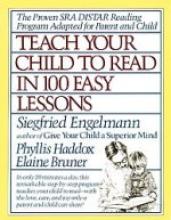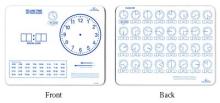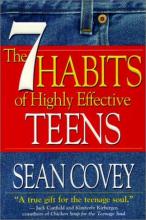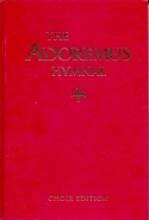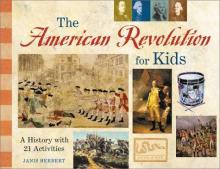No name
Teach Your Child to Read In 100 Easy Lessons
The 100 EL is a direct instruction program. This means that the teacher's dialogue is scripted. The sessions are designed to take 20 minutes per day. We found them to take 15 to 30 minutes a day. If it takes any longer, I recommend to stop using the program for a few weeks to let things "jell" then go back to it. I did this periodically with both children and they did not forget any of the previous material when we went back to it.
If your child is a cuddler and loves to be read to while sitting in your lap this is an excellent program. I often thought of our schooling not as home school but as lap school. I have a nephew who was not a cuddler and did not like to sit still and be read to. His mother tried this program on him and it was a constant battle which they soon gave up.
The 100 EL uses only itself (just a book), you and the child. There are no additional workbooks, tapes or other falderal to cost you money and waste time. It is extremely easy to use. Just sit down with your child, open the book and begin reading. There is no lesson planning involved. The sounds of the letters are taught first and the names are taught only at the end. This is consistent with recommended phonics teaching. By lesson 9 the child begins to sound out written words.
An example, the sound of m has already been taught, the sound of e has been taught, I quote,"1. Touch the first ball for me. I'm going to sound out this word. then you'll say it fast. (Point to ball under m). 2.What's the first sound I'm going to say. (Touch for two seconds). (Student should say mmm (release) Point to ball under e) What's the next sound I'm going to say? (Touch for two seconds) (student should say eee). 3. Return to first ball. My turn to sound it out. (Touch under m and e as you say "mmmeee" (return to first ball) Say it fast. (Slide quickly to end of arrow.) me. 4. (Touch first ball) You're going to sound out this word, then say it fast. Sound it out. Get ready (Touch under m and e as child says mmmeee without pausing between sounds. Repeat until firm.) (Return to first ball) Say it fast (Slide to end of arrow.) me". As you can see it uses a stimulus-response method.
It progresses quickly from words to sentences to stories (all contained in the book). By the end the student is usually reading on a solid 2nd grade level. With my first daughter we did the first half in kindergarten, the second half in 1st grade concurrent with another program (The Hewitt easy readers). My second daughter did it all in kindergarten. She is an exceptionally eager reader however and now, at 6 is reading books such as "Charlotte's Web" (her current favorite).
I follow up the 100 EL with The Writing Road To Reading used along with Teaching Reading At Home which is a supplement to TWRTR. It organizes the material so it is easier to use. The 100 EL is a good background for TWRTR in my opinion. I got the idea from Berquist's Designing Your Own Classical Curriculum.
Teaching Montessori in the Home
This book is filled with simple Montessori learning activities and techniques for young children (2 - 5 yrs. or so). Included are instructions for making the materials very simply and inexpensively. For example we made some very nice picture cards by cutting photographs out of magazines, catalogs, etc. I attached them to index cards with contact paper.
One of the most valuable things I gained from using this book is a method called the "three period lesson" which I've found useful for teaching many things. I'll use the example of picture flashcards to explain it. The first step is to show the child the picture and tell them it's name. The second is to have the child point out a particular picture out of a small group. (e.g. where is the dog?). The third is to point to a picture and ask the child what it's name is. You won't use all three steps in the very beginning, but observe the child so you know when they are ready to proceed to the next step. It sounds very simple, but you might be surprised how easy it is to expect your child to know something he hasn't yet been introduced to. This method presents a very straightforward way to keep yourself from skipping steps.
Teaching Writing: Structure and Style
Telling Time Dry Erase Board
Nasco, 11" x 14" sturdy wooden dry-erase board
This is a sturdy and elegant little dry-erase white board for young children learning to tell time. Parents can use this for demonstrating principles of telling time or it can be enjoyed by young children for independent learning.
The front sports a large clock face complete with numbers but no hour or minute hands (these can be drawn in with a dry-erase marker). There is also a blank spot for a digital clock reading so that children can write in those numbers while practicing telling time. The bottom bar marks 32 different times that the child can practice.
The back has 32 small clocks marked with different times. The child can write the correct time underneath each clock.
What a great and reasonably priced product. We have two so that a younger sibling can participate too.
That Girl of Pierre's
That Love May Grow
The 7 Habits of Highly Effective Teens
We sometimes think of teenagers as immature, selfish and lacking in objectivity. Sean Covey believes they can learn to be otherwise. Using humorous story lines and a heavy sprinkling of anecdotes Covey has set forth a series of steps leading teens toward a more mature and compassionate view of life. While this is a secular book, it is written from a Christian perspective and "the Golden Rule" underlies most of the content.
The 267 pages are divided into twelve chapters covering the seven habits that "effective" teens display. The author doesn't go into detail regarding what "effective" means, but the reader understands it to be embracing life and living it in a positive, productive and compassionate manner. The seven habits include: being proactive (making a choice to respond positively rather then react negatively), beginning with the end in mind, putting first things first, thinking win-win, seek first to understand, then to be understood, synergize (teamwork), sharpen the saw (taking care of your mind, body, heart and soul. Each chapter begins with a brief introduction of the habit written in a style which grabs the reader. Many anecdotes and examples are then provided showing the effects of the habit in the real world. Finally the author provides a series of exercise to help the teen focus on developing that habit. The exercises are clever and would be effective if the teen carried them out.
This is an excellent book and one which I'll happily pass on to my children with a few pages removed. The author does an outstanding job of explaining how self actions effect mood, performance and one's environment. He encourages teens to be competitive with themselves and avoid comparison. He challenges them to develop internal control that will allow them to act rather then react to life. While Covey doesn't suggest that the internal control should be God centered, he presents the material in such a way that a religious teen would naturally understand that God would be at the center of self discipline.
Parents should be aware of a few comments in the book that deal with sensitive issues. One brief anecdote concerns a girl who was sexually abused as a child, and a few times slang is used for obscene gestures. Page 78 covers the topic "What about Sex" and the section "Caring For Your Heart" beginning on page 228 discusses "Sex and Relationships" and includes a 50 item listing titled "You're not ready to have sex if...." The list would be good for a secular teen but would not be suitable for Catholic children. These pages are easily removed from the book. The section "Caring For Your Soul" is general in nature and not in opposition to any Catholic teaching or practice.
In order for the book to be fully appreciated, teens reading it should have experience in social situations outside the home. Many of the anecdotes take place at school but would be understood by teens who have been in any type of group situation. This book is best suited for children 14 years and older. Older Catholic teens would benefit from reading How To Live Nobly and Well (reviewed above) by Edward Garesche, S.J. which touches on similar subjects from a Catholic perspective.
The Adoremus Hymnal
This is a beautiful hymnal with all the favorite traditional Catholic hymns and the parts and prayers of the Mass in English and Latin. It avoids any use of "feminized" (a.k.a. inclusive) language, which has destroyed so many of the Church's beautiful hymns and even tried to remove the use of "he" or "him" when referring to Jesus. Our family has taken to pulling out this hymnal every morning after prayers and each person picking out their favorite song to sing together before beginning the school day. My six year old daughter who is just reading likes to scan through the index in back to look for something familiar. She is unwittingly introducing herself to the concept of "alphabetical order" and getting a little reading practice as well. The choir edition (424 pages) contains all four parts for those who wish to learn the harmonies and the chant parts of the Mass are in the traditional chant notation.I think this is an excellent resource for the Catholic homeschooler's music curriculum. Included are traditional Christmas Carols (such as Hark the Herald Angels Sing), favorite Marian Hymns (such as Salve Regina and Hail Holy Queen), hymns for every liturgical season and special feasts. Many hymns are offered in both English and Latin (such as O Come All Ye Faithful). The multiple indices in back are also helpful for finding particular songs and you'll even find an "Index of Scriptural References Related to Hymns."
Copyright 1997/ 2nd edition 2011.
See more information here, at the Adoremus Hymnal Landing Page. The page includes a link to mp3 audio files of the hymns and Mass settings, hosted by Ignatius Press. These aren't "great" recordings intended for pleasurable listening – but they are a great way to help teach your children some of the great treasures of the Church even if you're not very musical or aren't familiar with the hymns.
The American Revolution for Kids
What is history? A story. In The American Revolution for Kids, Janis Herbert has given us a well written, high interest story. Her style of writing is lively and interesting as wells as fair and impartial – giving us a fair and balanced picture of an emotionally turbulent time. This book offers a good overview of the time period (suitable for putting together a unit study on the time period) or interesting reading for its own sake.
Although the majority of the book follows the development of the war from its onset until its conclusion, Herbert also takes some detours, offering information about other events and people of the time – like a typical colonist and the life of soldier – to give us a sense of day-to-day life and customs of the time. The story doesn't end with the closing of the war; the last chapter discusses the Constitutional Convention through the final ratification of the Constitution.
There are many other extra features in this book:
A timeline sets the stage beginning with the French and Indian War (1754-60), following the development of important battles, explaining important dates along the way and finally ending with Congress adopting the Bill of Rights in 1791.
Spotlight biographies cover such important figures as John Hancock, George Washington, and Nathanael Greene. Other interesting facts are also spotlighted throughout the book, such as how many musket balls were made from the torn down, lead statue of King George.
The 21 Activities noted in the title are sprinkled throughout the text and include making a fringed hunting shirt like one worn by frontiersman Gen. Daniel Morgan, reenacting the Battle of Cowpens, creating a powder horn, sewing a pouch, and baking Boston Brown bread.
The end pages include a glossary, a list of famous Patriots and Redcoats, a list of biographies, the Declaration of Independence, web sites to explore, Revolutionary War Sites to visit in person, a Bibliography, and an index.
I would suggest that families make a point of reading about how Catholics were treated at this time, since this is overlooked in most secular texts. Far from religious toleration, there was a great deal of bigotry at that time, creating mixed feelings for Catholics as to which side they should support.
Sepia and black and white illustrations.

